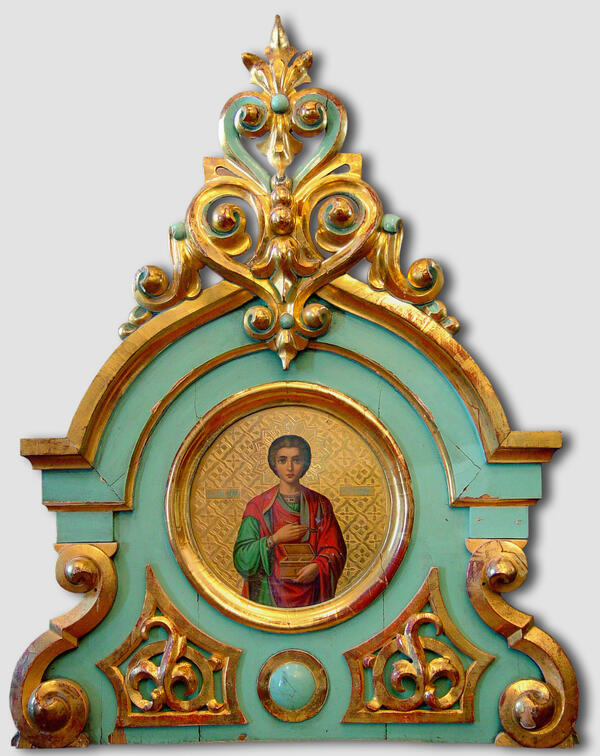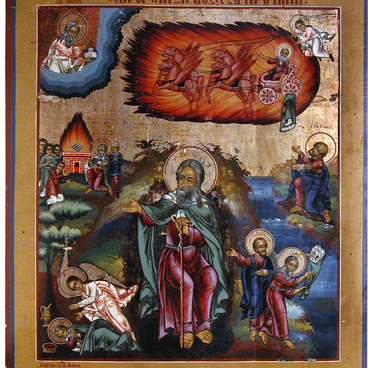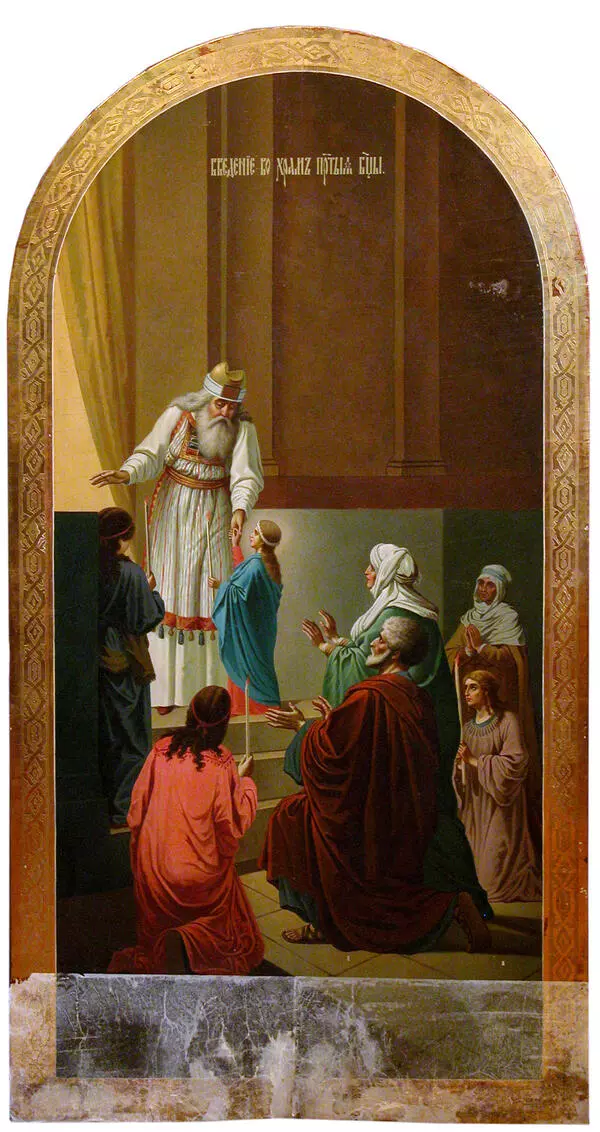Pantaleon was born in the 3rd century AD in the ancient city Nicomedia in Minor Asia, not far from Constantinople. This time is regarded the early period of establishment of the Christianity on the territory of the Roman Empire. Since his teenage years Pantaleon studied medicine. After receiving baptism he decided to dedicate his life to serving the afflicted ones. He healed the prisoners and the beggars, many of whom were Christians and suffered for the devotion to their religion. He cured them altruistically, for that he was captured and martyred. Saint martyr Pantaleon is a patron of the sick. In the icons he is usually depicted as a young beautiful man holding a small spoon and a box for medications in his hands.
Icon Pantaleon the Healer was made in 1912 in the workshop of Joseph Andreevich Khlopotov. Primarily Kholopotov’s workshop was situated in Yekaterinburg, but later he moved to Ishim, a town in Tobolsk Governorate. Khlopotov took an experienced painter Pavel Pestov and a few gravers and gilders with huge experience with him. The workshop flourished and made commissioned icons for the whole region. Except for the icons artists worked on the church decoration: they decorated the moulding, vaulting, and windows with ornaments, vignettes, quotes from the New Testament, decorated the church interiors. The icon The Presentation of the Blessed Virgin Mary made by the same workshop is also in the collection of the museum.
Pantaleon the Healer icon is exhibited with the fragment of iconostasis and is an example of part of the complex interior decoration. It is made as a rondo and put, as Khlopotov wrote in the contract, under the double Bohemian glass. The Bohemian glass was of great quality, as this region was famous from the 17th century as a glass-blowing area. The round icons are quite rare, for usually such shape was only used during the creation of iconostases. The image has academic character which “pleases an eye” and has no strict reference to the religious basis. The fragment was cut from the upper part of iconostasis taken from one of the churches in Kurgan Uyezd shut down in the early 1960s. The basis painted with cyan enamel and coarse pitch thread was made by Khlopotov’s gravers of pine, the thinner details were made of linden. Gold planting was made with the gold of higher quality used not only in carving but very frequently in the icons themselves. The small books with the golden leafs were bought by icon painters at the big village markets and city shops in Kurgan and Ishim.
Icon Pantaleon the Healer was made in 1912 in the workshop of Joseph Andreevich Khlopotov. Primarily Kholopotov’s workshop was situated in Yekaterinburg, but later he moved to Ishim, a town in Tobolsk Governorate. Khlopotov took an experienced painter Pavel Pestov and a few gravers and gilders with huge experience with him. The workshop flourished and made commissioned icons for the whole region. Except for the icons artists worked on the church decoration: they decorated the moulding, vaulting, and windows with ornaments, vignettes, quotes from the New Testament, decorated the church interiors. The icon The Presentation of the Blessed Virgin Mary made by the same workshop is also in the collection of the museum.
Pantaleon the Healer icon is exhibited with the fragment of iconostasis and is an example of part of the complex interior decoration. It is made as a rondo and put, as Khlopotov wrote in the contract, under the double Bohemian glass. The Bohemian glass was of great quality, as this region was famous from the 17th century as a glass-blowing area. The round icons are quite rare, for usually such shape was only used during the creation of iconostases. The image has academic character which “pleases an eye” and has no strict reference to the religious basis. The fragment was cut from the upper part of iconostasis taken from one of the churches in Kurgan Uyezd shut down in the early 1960s. The basis painted with cyan enamel and coarse pitch thread was made by Khlopotov’s gravers of pine, the thinner details were made of linden. Gold planting was made with the gold of higher quality used not only in carving but very frequently in the icons themselves. The small books with the golden leafs were bought by icon painters at the big village markets and city shops in Kurgan and Ishim.




